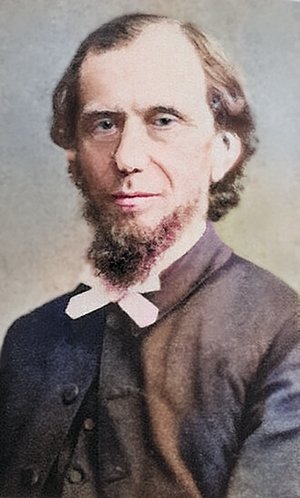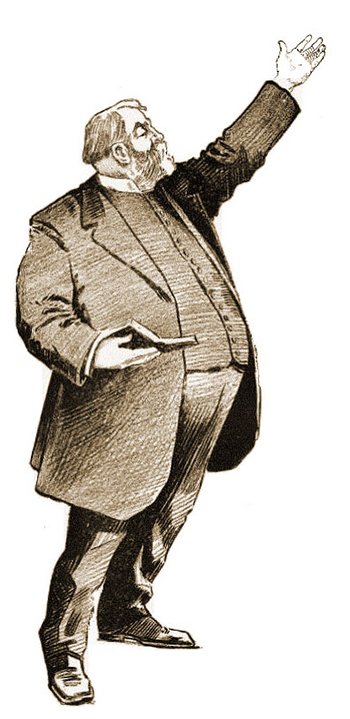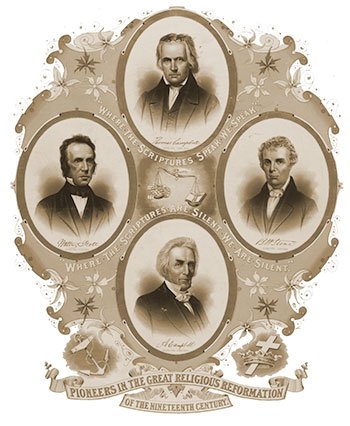1860 Andrew Murray Revivals

Andrew Murray
The 1860s witnessed a significant spiritual awakening in South Africa, largely attributed to the ministry of Andrew Murray Jr. (1828-1917). This revival, characterized by fervent prayer, conversions, and a renewed emphasis on missions, left a lasting impact on the religious landscape of South Africa and beyond. This article delves into the Andrew Murray revivals, exploring their antecedents, key individuals, places, and events, and analyzing their results and influence on both local communities and wider society.
Antecedents to Revival
While Andrew Murray Jr. played a pivotal role in the 1860s revivals, it’s crucial to acknowledge the groundwork laid by preceding events and individuals. The revivals were not an isolated phenomenon but rather the culmination of various factors that contributed to a fertile ground for spiritual awakening.
To begin with, the 1860s South African revival coincided with a period of heightened religious fervour across the globe. The Prayer Meeting Revival, which swept across the United States in 1857-1858, ignited powerful revivals in Ireland and Wales in 1859 1. This global wave of spiritual awakening created a climate of expectation and anticipation for a similar move of God in South Africa 2. News of these revivals circulated among South African ministers through publications and conferences, inspiring prayer and preparation for a spiritual outpouring in their own land 3.
Furthermore, the dissemination of religious materials, such as the book “The Power of Prayer” and articles in publications like De Kerkbode and De Wekker, played a significant role in promoting prayer and preparing the ground for revival 3. These publications emphasized the importance of prayer, the character of God, the role of the Holy Spirit, and the need for both corporate and private intercession for revival 2.
In addition to these external influences, Andrew Murray Jr.’s personal background and theological education significantly shaped his understanding of revival and his eventual embrace of the movement. His father, Andrew Murray Sr., a Dutch Reformed Church minister, instilled in him a deep commitment to prayer and a fascination with revival history. Every Friday evening, Murray Sr. would gather his family and read accounts of past revivals, followed by fervent prayer for revival in South Africa 4. This consistent emphasis on prayer and revival in his formative years undoubtedly influenced Murray Jr.’s ministry and his receptivity to the spiritual awakening that unfolded in the 1860s.
Moreover, Murray Jr.’s theological education in Scotland and the Netherlands further shaped his outlook. While studying at the University of Utrecht, he and his brother John became members of Het Réveil, a religious revival movement that challenged the prevailing rationalism of the time 5. This movement emphasized personal piety, spiritual experience, and a renewed focus on the work of the Holy Spirit, themes that would later become central to Murray Jr.’s ministry and the South African revival.
Finally, the arrival of Scottish Presbyterian ministers in South Africa during the 1820s brought a fresh wave of evangelical fervor and a heightened awareness of missions within the Dutch Reformed Church 6. This emphasis on missions, coupled with the growing concern for the spiritual needs of the expanding Afrikaner population, created a sense of urgency and a desire for God’s intervention in the form of a revival.
Key Individuals, Places, and Events
The 1860s revivals were marked by the involvement of several key individuals, specific locations that served as centers of spiritual activity, and pivotal events that shaped the course of the awakening.
Key Individuals
- Andrew Murray Jr.: As a young pastor in Worcester, Murray Jr. initially found himself at odds with the emotional expressions and fervent prayers that characterized the early stages of the revival. He even attempted to silence the fervent prayers during a youth meeting in Worcester 4. However, he eventually embraced the movement and became a leading figure, preaching powerful sermons and guiding his congregation through the spiritual awakening 1. This transformation highlights how God can use individuals even when they have initial reservations or doubts.
- Faure: A prominent theologian and church leader, Dr. Faure played a crucial role in promoting prayer and preparing the ground for revival. He actively encouraged ministers to preach on the character of God, the role of the Holy Spirit, and the need for corporate and private prayer for revival 2.
- Three individuals in Montagu: Jan Naude, Miss Van Blerk, and Saul Pieterse, who faithfully met for prayer in Montagu, became catalysts for the revival. Their persistent intercession and concern for the spiritual needs of their community ignited the first sparks of the awakening 4.
Key Places
- Worcester: The town of Worcester, where Andrew Murray Jr. served as pastor, became a central hub for the revival. The revival and missions conference held in Worcester in 1860, attended by 374 ministers, served as a launching point for the spiritual awakening 4.
- Montagu: The revival’s initial spark ignited in Montagu, on the farm of David Naude, where a small prayer meeting among three individuals transformed into a widespread outpouring of the Holy Spirit 2.
- Wellington, Cape Town, Swellendam, Bloemfontein: The revival spread to these towns and beyond, impacting various communities and leaving a lasting legacy of spiritual renewal 7.
Key Events
- Worcester Revival and Missions Conference (1860): This conference, focused on promoting revival and missions, brought together a large number of ministers and laid the groundwork for the spiritual awakening that followed 4.
- Pentecost Sunday Sermon (1860): Andrew Murray Jr.’s sermon on “The Ministration of the Spirit” on Pentecost Sunday marked a turning point in his ministry and the revival. His powerful preaching on conversion and faith ignited a deeper sense of spiritual urgency among his congregation 2.
- Youth Prayer Meeting in Worcester: A youth prayer meeting in Worcester, characterized by fervent and emotional prayers, became a catalyst for the revival in the town. This event, initially met with resistance by Murray Jr., eventually led him to embrace the revival and its manifestations 4.
Results of the Revivals
The Andrew Murray revivals produced significant results, both tangible and intangible. These included conversions, spiritual manifestations, changes in church attendance and growth, and a renewed emphasis on missions.
Conversions
The revivals led to a significant number of conversions, with people experiencing deep conviction of sin and turning to faith in Jesus Christ. While precise figures are unavailable, accounts from the time indicate a widespread turning to God, particularly among farmworkers and those previously considered spiritually indifferent 2. The impact of the revivals was so profound that many could clearly recall it even half a century later 7.
Spiritual Manifestations
The revivals were also marked by various spiritual manifestations, including fervent prayers, emotional expressions, and a heightened awareness of God’s presence. These manifestations, though sometimes met with skepticism, were seen by many as evidence of the Holy Spirit’s work in transforming lives and communities 4. Drawing from historical accounts of revival movements, such as the Renish province revival in Germany, these manifestations often included deliverances and healings through prayer 4.
Impact on Church Life
The revivals had a notable impact on church attendance and growth. Prayer meetings, previously sparsely attended, became overflowing with people seeking God. The demand for spiritual guidance and fellowship increased, leading to more frequent prayer meetings and a renewed interest in spiritual matters 4. In some instances, people demanded daily and even three-times-a-day prayer meetings, highlighting the fervent prayer that characterized the revivals 4. While specific data on church growth is limited, the overall impact of the revivals suggests a revitalization of the Dutch Reformed Church and a deeper engagement with faith among its members.
Renewed Emphasis on Missions
The revivals fueled a renewed emphasis on missions, both locally and abroad. Andrew Murray Jr. became a strong advocate for missions, establishing the Missionary Institute at Wellington to train and send missionaries into the interior of Africa 8. The revivals instilled a sense of responsibility among Christians to reach out to those who had not yet heard the Gospel, leading to increased missionary activity and a greater awareness of the Church’s role in spreading the Christian message.
Local and Wider Influence
The Andrew Murray revivals exerted a considerable influence on both local communities and wider society in South Africa.
Local Influence
- Transformation of Communities: The revivals brought about a noticeable transformation in local communities. Drunkenness and immorality decreased, while prayer and Bible study became more prevalent 2. The revivals fostered a sense of unity and purpose among Christians, leading to increased social cohesion and a greater emphasis on spiritual values.
- Increased Religious Participation: The revivals sparked a surge in religious participation, with prayer meetings and church services becoming more frequent and well-attended. This increased engagement with faith contributed to a stronger sense of community and a renewed focus on spiritual growth.
- Empowerment of the Marginalized: The revivals had a particularly strong impact on marginalized groups, such as farmworkers and those previously excluded from religious life. The emphasis on personal experience and spiritual equality broke down social barriers and fostered a sense of inclusivity within the Church. This serves as an example of how spiritual awakenings can promote social change and challenge existing power structures.
Wider Influence
- Strengthening of the Dutch Reformed Church: The revivals played a significant role in strengthening the Dutch Reformed Church in South Africa. The influx of new converts and the renewed commitment among existing members solidified the Church’s position as a central institution in Afrikaner society.
- Promotion of Social Reform: The revivals contributed to a broader movement of social reform in South Africa. The emphasis on Christian values and social responsibility inspired efforts to address issues such as poverty, education, and racial inequality.
- Legacy of Andrew Murray Jr.: The revivals cemented Andrew Murray Jr.’s legacy as a prominent religious leader and writer. His prolific writings on prayer, holiness, and the Christian life continue to inspire and influence Christians worldwide.
Chronological Timeline of Events and People
| Year | Event | People Involved |
| 1820s | Arrival of Scottish Presbyterian ministers in South Africa, introducing a fresh wave of evangelical fervor and missionary awareness within the Dutch Reformed Church. | Scottish ministers, Murray family |
| 1838 | Andrew Murray Jr. and his brother John are sent to Scotland for education, where they are exposed to revivalist influences. | Andrew Murray Jr., John Murray |
| 1840s | Murray brothers study theology in Utrecht and join Het Réveil movement, a revival movement emphasizing personal piety and spiritual experience. | Andrew Murray Jr., John Murray |
| 1857-1858 | The Prayer Meeting Revival sweeps across the United States, marking the beginning of a global wave of spiritual awakening. | – |
| 1859 | Powerful revivals erupt in Ireland and Wales, further fuelling the anticipation for a similar move of God in South Africa. | – |
| 1860 | The Revival and Missions Conference in Worcester brings together 374 ministers, setting the stage for the South African revival. | Andrew Murray Jr., Dr. Faure, 374 ministers |
| 1860 | The revival begins in Montagu with a small prayer meeting that transforms into a widespread outpouring of the Holy Spirit. | Jan Naude, Miss Van Blerk, Saul Pieterse |
| 1860 | Andrew Murray Jr.’s Pentecost Sunday sermon in Worcester on “The Ministration of the Spirit” ignites a deeper sense of spiritual urgency among his congregation. | Andrew Murray Jr. |
| 1860 | A youth prayer meeting in Worcester, characterized by fervent and emotional prayers, sparks revival in the town, despite initial resistance from Murray Jr. | Andrew Murray Jr., youth of Worcester |
| 1860-1861 | The revival spreads to various towns in South Africa, impacting communities and leaving a lasting legacy of spiritual renewal. | Andrew Murray Jr., local communities |
Conclusion and Main Takeaways
The Andrew Murray revivals of the 1860s stand as a testament to the transformative power of prayer, the impact of global revival movements, and the enduring legacy of dedicated individuals like Andrew Murray Jr. The revivals brought about significant spiritual and social changes in South Africa, leaving a lasting impact on the Dutch Reformed Church and wider society.
The main takeaways from the revivals include:
- The importance of prayer: The revivals were preceded and sustained by fervent prayer, highlighting the crucial role of intercession in preparing the ground for spiritual awakening.
- The contagious nature of revival: The global spread of revival movements in the mid-19th century demonstrates the interconnectedness of Christian communities and the role of shared experiences in fostering spiritual renewal.
- The impact of individual leadership: Andrew Murray Jr.’s leadership, though initially hesitant, played a pivotal role in guiding and shaping the course of the revivals.
- The transformative power of the Holy Spirit: The revivals were characterized by conversions, spiritual manifestations, and a renewed emphasis on holiness, all attributed to the work of the Holy Spirit. These manifestations often included a deep conviction of sin among non-Christians, leading them to seek salvation through faith in Jesus Christ. For Christians, revival brought about earnest repentance, a renewed focus on prayer and Scripture, and a quickening of their spiritual lives in areas such as worship, holy living, evangelism, and service 1.
- The social impact of revival: The revivals not only transformed individual lives but also brought about positive social changes, fostering unity, promoting missions, and inspiring social reform.
However, it’s important to acknowledge that revival movements are not without their challenges and criticisms. Concerns about emotionalism, social division, and the potential for manipulation or fanaticism have been raised throughout history. While the Andrew Murray revivals were largely seen as a positive force, it’s crucial to approach any revival movement with discernment and a commitment to biblical truth.
The Andrew Murray revivals serve as a reminder of the potential for spiritual renewal and its capacity to bring about lasting change in individuals, communities, and society as a whole. They also offer valuable lessons about the importance of prayer, the interconnectedness of the global Church, and the need for both spiritual fervour and theological grounding in any movement that claims to be of God.
Works cited
- Andrew Murray and the South African Revival (Part 1) – VanceChristie.com, accessed on January 17, 2025, https://vancechristie.com/2019/04/15/andrew-murray-and-the-south-african-revival-part-1/
- Andrew Murray and the 1860 Revival – Frontline Fellowship, accessed on January 17, 2025, https://www.frontlinemissionsa.org/africa/andrew-murray-and-the-1860-revival
- Andrew Murray and the 1860 Revival | PPT – SlideShare, accessed on January 17, 2025, https://www.slideshare.net/slideshow/andrew-murray-and-the-1860-revival/12924013
- Andrew Murray – Revival Library, accessed on January 17, 2025, https://revival-library.org/david-smithers/andrew-murray/
- Andrew Murray (minister) – Wikipedia, accessed on January 17, 2025, https://en.wikipedia.org/wiki/Andrew_Murray_(minister)
- The role and influence of Andrew Murray Jr in missions within the Dutch Reformed Church and in wider context – SciELO SA, accessed on January 17, 2025, https://scielo.org.za/scielo.php?script=sci_arttext&pid=S2413-94672022000300005
- A Heart on Fire: The Life of Andrew Murray (1828-1917) – Sober Minds, accessed on January 17, 2025, https://www.soberminds.ca/2018/09/15/a-heart-on-fire-the-life-of-andrew-murray-1828-1917/
- Andrew Murray: Africa for Christ | Christian History Institute, accessed on January 17, 2025, https://christianhistoryinstitute.org/store/dvd/501599d/andrew-murray-africa-for-christ



